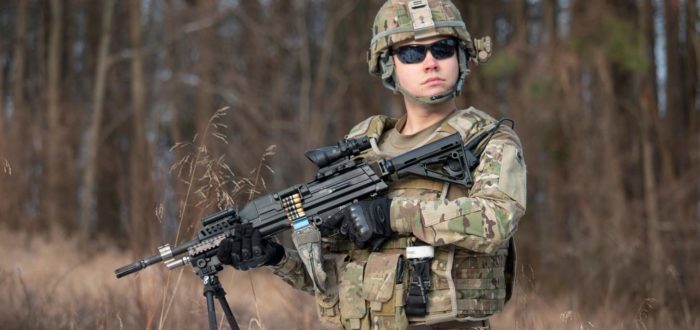Armament Research Services (ARES) is excited to announce the release of our latest Research Report, Cased Telescoped Ammunition: A Technical & Historical Overview. This report provides a high-level overview of the current and historical state of development on a range of cased telescoped (CT) cartridge designs. It also provides a technical analysis of CT ammunition, including defining these cartridges and distinguishing them from semi-telescoped examples. The authors explore what the advent of CT cartridges and related ammunition developments (e.g. polymer cartridge cases, general-purpose calibres, etc.) could mean for small arms developments on the horizon and into the future.
From the Report:
The age of the all-metal-cased small arms cartridge is coming to a close. Refinements in materials technology and ammunition design have opened the way for new ammunition construction techniques utilising lightweight and inexpensive polymers in place of traditional brass or steel. Conventionally configured cartridges are far from optimal in terms of overall length, weight, and volume. Cased telescoped (CT) ammunition offers the potential for significant reduction in all of these areas [and] … has the potential to significantly benefit the front-line soldier and rear-line logistician alike.
In addition to assessing the technical characteristics and providing historical context, the report also addresses logistical and programmatic concerns, charting the course of the U.S. LSAT programme and associated efforts. The implications of CT ammunition are also explored, with military requirements and opportunities for change assessed.
There are substantial logistic, programmatic, and economic implications to the military adoption of any new widely-issued calibre. These would be magnified substantially by the adoption of a cartridge in a CT or other novel configuration. Such a step would require overcoming institutional inertia within the military acquisitions, logistics, and operational apparatuses. … The costs of adopting new ammunition standards are invariably high, both in terms of dollars and risk. This is perhaps truest when such developments would necessitate a new, non-interchangeable cartridge and/or weapon to be introduced. For these reasons, new military service rifle calibres are very rarely adopted—in most western nations, this only happens once every 50 years or so. However, the introduction of cased telescoped ammunition would necessitate a new ammunition standard regardless of ballistic characteristics, creating a once-in-a-half-century opportunity to optimise those characteristics for the best possible result.
To read the full publication, click here.
For more publications from ARES, see our Publications page.


